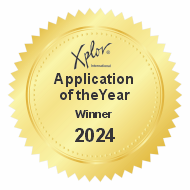“Where do you want to go for dinner?” The haunting question that has plagued homes for decades. Healthy or fried? Sit down or takeout? Ultimately, the choice never feeling quite right. Now imagine, if you will, a utopia in which the perfect dinner choice is anticipated based on your exact tastes and preferences, proffered without the grief of 45 minutes wasted staring at a list of restaurants you’ve scrolled through countless times before.
Sadly, we find ourselves still years away from the optimal dinner choice emerging like a phoenix from the flames, but the underlying concept is one that has been applied – quite impactfully – to customer communication. Like dinner options, the number of communication channels available to customers today is seemingly endless: texting, messaging, calling, mailing. If we can do it all, the question becomes, how do we optimize the customer’s communication experience at each stage of the purchasing process?
The answer: Optichannel Communication.
A Brief History
Single Channel Communication – This long-outdated communication strategy harkens back to the dark ages of customer engagement, a time when brands only had the ability to engage with customers through a single source of communication. In this simplistic strategy, your customer received a bill in the mail and mailed back a payment. One channel for all your communication.
Multichannel Communication – The communications equivalent of the industrial revolution. Suddenly a customer receiving a bill in the mail is followed by a phone call for more information, a direct message on social media for billing clarification, and finally a website visit to make the payment.
Omnichannel Communication – More communication channels, more problems – namely the loss of information when a customer switches from one channel to the next. Thus, the integration of channels is born. Like its predecessor, your customer can receive their bill in the mail, call for more information, reach out about a question on social media, and finally visit your website for payment. The difference? Information and updates from each interaction are gathered and stored, meaning customers need not reexplain or reenter critical information at every stop along the journey.
Every iteration of the customer communication model has aimed to ease the burden placed on customers, creating a more holistically positive experience throughout the entirety of the journey. But with new strategies come new requirements – most importantly, meeting the customer at their preferred channel of communication.
Optichannel communication utilizes the overarching framework of omnichannel but propels it further – anticipating which channel will be the most favorable (or optimal!) to the customer at any given time.
While the focus of previous communication strategies has revolved around the channels themselves – offering more options, integration – this strategy takes a new approach, looking through the customer lens to anticipate and personalize the method and message for each stage. Whether it’s preemptively messaging a customer who typically reaches out about billing questions via social media, or including a return envelope for customers who always pay their bills by mail, actively connecting with customers via their preferred channels takes the guesswork out of the conversation.
The key to anticipating the optimal communication channel? Data, data, customer history (aka data) and more data. By analyzing previous use, customer characteristics, and communication preferences, brands can predetermine a customer’s optimal channel of communication and preface the impending interaction with targeted messaging.
The customer communication landscape continues to shift as technology develops and customer expectations intensify. What was once limited to physically mailings and phone calls has grown to become a veritable maze of communication channels and interactions, with customers choosing one or all channels to convey their messages to a brand. Traversing this complex maze and reaching the customer at the right time, with the right message, through the right channel remains the holy grail of communication.




